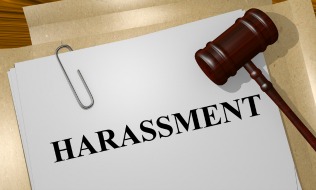

One summer, as a university student in the mid-1970s, Frances Gallop was working at a restaurant where the manager sexually harassed nearly every female employee.
“I don’t think any of us had even heard the term sexual harassment. We just knew that his behaviour was very obnoxious and unwanted,” says Gallop, now a partner at Filion Wakely Thorup Angeletti LLP in Toronto. When the women got to know each other and swapped notes, they decided, as a group, to report him to the restaurant owner.
“He took it seriously, he listened and he talked to the manager. He [ended up firing] the guy,” says Gallop. “He acknowledged to us that what happened was wrong, and in my case, he gave me two free pizzas and two cases of beer as a way to say sorry. That’s laughable in a way nowadays, when you think about substantial damage awards, but I felt good about it. I felt he did the right thing.”
Read: 60% of Canadians report experiencing workplace harassment: survey
From that experience, Gallop realized the “huge power in numbers” that makes it easier for employees to report inappropriate behaviour to managers or human resources. So Gallop encourages employers whose staff don’t interact organically to create opportunities for those connections to form.
Power in numbers is also a driving philosophy behind Callisto, a U.S. startup that gives assault victims on university campuses different options to find support and identify repeat perpetrators. One option is to send only the encrypted, time-stamped record of their assault to their university if and when another student names the same perpetrator.
“For a lot of victims . . . it’s not worth the risk to come forward unless you know that you’re not the only one,” Jessica Ladd, founder and chief executive officer of Callisto, said in an interview on Late Night with Seth Meyers in November.
“Because then you’re more likely to be believed and it’s more likely that your perpetrator is going to be held accountable,” she added. Callisto is currently in place at 12 U.S. university campuses, and Ladd’s team is adapting it for workplaces.
Matthew Lawrence, director of TLS Enterprises Consulting Inc. in Winnipeg, worked on a case where multiple complainants alleged harassment against one employee. “When they finally did speak to each other and realized they were not alone, the fact that they communicated with each other was used as an argument — unsuccessfully — by the respondent that the complainants were colluding against him,” he says. “If some type of system were in place that allowed victims of harassment to know they were not alone, I’m pretty sure this complaint would have been addressed earlier.”
Read: Federal government introduces bill to address workplace harassment, violence
He also notes the Callisto model of reporting brings about new questions, such as how employers can ensure the alleged perpetrator faces the allegations in a reasonable amount of time and who gets access to submitted information.
Employers must work to prevent harassment in the workplace, says Gallop. If they don’t, they can face human rights complaints, and sexual harassment can also be a factor in constructive dismissal lawsuits. Since harassment encompasses everything from off-colour jokes to serious sexual assault, damages vary widely but they can reach six figures.
In addition to encouraging staff to connect, managers and human resources professionals should make themselves approachable. “Get out of your office, get to know people. Let them know you care about them and that you’re there to help if they have issues or concerns,” says Gallop. If an employee makes a complaint, the employer must respond promptly and should provide support, such as counselling, access to an employee assistance program, time off work and legal advice.
At the same time, employers must be fair to the alleged perpetrator and conduct an unbiased investigation, says Gallop. “Keep the process as confidential as possible because careers and reputations are at stake. The respondent is absolutely entitled to due process,” she says.
Anti-harassment training is also essential, and Lawrence notes it’s helpful to include it in a new employee’s orientation process. However, if an organization is looking to change its culture, “the most beneficial trainings are when you have people from all different levels of the organization in a room together and having honest, open dialogue about . . . what we want this organization to look like,” he says.
Read: Mindfulness training reduces workplace bullying, harassment: UBC study
